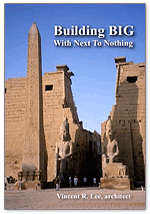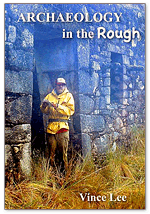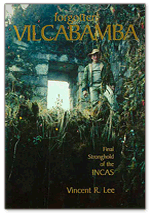Sixpac Manco Publications Catalog
Sixpac Manco Publications: Published Works of Vincent R. Lee
This collection of books and monographs by architect, author and editor, Vincent R. Lee describes the author’s expeditions over the past 60 years. From atop many of the world’s great peaks, to the mysterious Chachapoyas “Cloud People” of northern Peru to the Inca metropolis at Espíritu Pampa, the “Plain of Ghosts” in the Amazonian rain forest, the many places Vince has worked, the adventures encountered and lessons learned along the way are all recounted in the publications offered.
A Perspective on “Context”
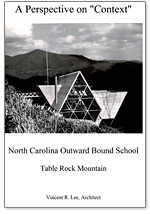
This is an updater reprint of the author’s 1966 Masters Thesis as presented to the Princeton University School of Architecture. It describes the planning and design of the North Carolina Outward Bound School near Table Rock Mountain in the Southern Appalachians. The author’s thesis design was chosen by the School for its base camp beneath the impressive monolith there called Table Rock. It was never built.
An Anthology of Archaeological Odd Jobs
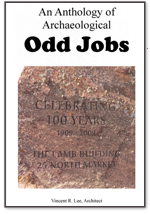
This is a collection of the author’s previously unpublished papers and stories, from an early tour with the Marines to several “careers” as an architect, mountain guide, explorer and, most recently, as an amateur archaeologist. This collection recounts a few archaeological projects that didn’t quite fit anywhere else and either didn’t seem to warrant stand-alone, formal publications or were done in collaboration with friends and colleagues who published his contributions elsewhere.
THE LAST OF THE OLD WEST: A Cautionary Tale…
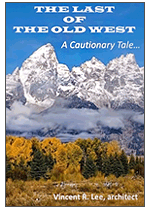
The author played a part in the utter transformation of a remote, beautiful and largely unspoiled Rocky Mountain ranching valley into a high-voltage, world-renowned mega-resort named 2014’s Richest County in America. This is the story of the rise, and some would say fall, of Jackson Hole, Wyoming.
OLD SCHOOL: A Mountain Guide’s Life Before the Net
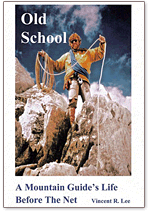
It was the Golden Age of backcountry mountaineering and Vincent Lee was lucky enough to be there. Forty years he wandered the high country, thirty as an instructor and guide, mostly with young beginners. This is Vince’s own story of his adventures as a mountain guide, before the connectivity of the digital age disconnected us from our relationship to the earth.
Forgotten Vilcabamba: Final Stronghold of the Incas
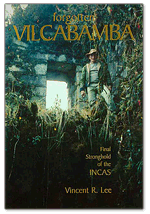
A modern-day scientific adventure, “Forgotten Vilcabamba” is an important addition to the annals of archaeological exploration in the high Andes of Peru by architect/explorer Vincent R. Lee describing lost Vilcabamba, the once-powerful Incas’ mysterious redoubt in the jungles of the Upper Amazon.
-
Chanasuyu: The Ruins of Inca Vilcabamba
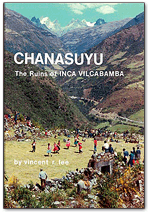
An in-depth survey of the neo-Inca state of Vilcabamba, detailing all that remains of the final stronghold from which the Incas defied Spanish authority for nearly 40 years after the Conquest. Descriptions of 350 kilometers of Inca roads and more than 500 individual structures provides a complete guide to the region for adventure travelers and interested archaeologists.
Available as printed Soft Cover
Archaeology in the Rough: Thirty Years Exploring in the Andes
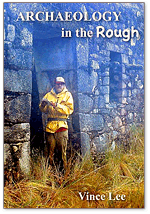
After authoring “Forgotten Vilcabamba”, Vince and Nancy pursued similar projects all up and down the Andes, from Ecuador to Bolivia. Their methods were strictly old school: a compass in one hand and a machete in the other. Ten of Vince’s annual papers presented to the John Howland Rowe’s Institute of Andean Studies at Berkeley are included in this compilation. They provide the reader with an idea of both the physical and the intellectual rewards of years in the Andean bush, uncovering the mysteries of the past.
-
Sixpac Manco: Travels Among the Incas
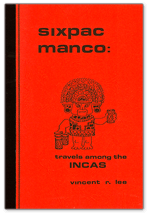
Vincent Lee’s first two expeditions to Peru; recounts his 1982 ascent of previously unclimbed Pico Iccma Ccolla (the “widowed Queen”) in the jungle above Espiritu Pampa (the “Plain of Ghosts”). In 1984 he returned to further explore the region and verify claims that the ruins at Espiritu Pampa are those of the Incas’ legendary last capital, Vilcabamba the Old. These journeys gave rise to the author’s ongoing career in Andean exploration and archaeology.
Available as printed Soft Cover -
Vilcabamba, Last Stronghold of the Incas
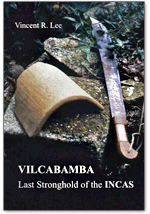
Inca Vilcabamba is one of the first regions conquered by Pachacutec in the mid fifteenth century. After four decades of tumultuous conflict between the Incas and Europeans, the Spaniards finally subdued the last of the rebels in this remote stronghold, deep in the Amazonian rain forest. Vilcabamba was abandoned and forgotten until Hiram Bingham’s visit brought attention to it four hundred years later. Follow-up explorations by an intrepid cast of characters revived the province in the eyes of science and confirmed the history recounted in these chronicles.
Available as printed Soft Cover -
Puncuyoc Revisited: An Inca Marvel Decoded
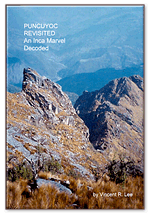
“Incahuasi” is an almost perfectly preserved relic from the heyday of the Incas, perched astride a 13,000 ft. high gap in the Peruvian Andes. This is the story of the detective work that uncovered the Incas’ reason for creating this architectural gem in wild and inhospitable surroundings in the remote Puncuyoc mountain range of Peru.
Available as printed Soft Cover -
Guarancalla, The Lost Mission of Padre Ortiz
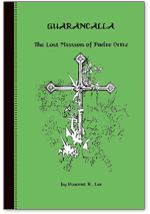
Of the two Spanish priests allowed to build missions in Inca Vilcabamba, only Padre Marcos Garcia’s church — built near the Inca’s palace at Vitcos — had ever been found. What happened to the mission built by Padre Diego Ortiz in the forest village of Guarancalla? It was known to be somewhere mid-way between the province’s two major cities, but where? No one had ever looked for it. This is how the author rediscovered this historic site and unraveled a second, more important mystery in the steamy jungles of Peru.
Available as printed Soft Cover -
Inca Choqek’iraw: New Work at a Long Known Site
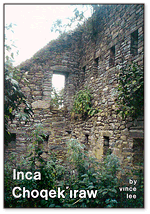
Recently recognized as one of Peru’s finest and most interesting Inca ruins is Choqek’iraw (sometimes spelled Choquequirao). Its elaborate “llama terraces” are unique in the Andes. This paper describes the site’s discovery more than two centuries ago, its history and exploration in recent years, including the author’s significant 1996 contributions to the latter and an Appendix documenting the llama terraces and other impressive new discoveries by others.
Available as printed Soft Cover -
Choquequirao to Machu Picchu at the Speed of Light: Visual Signaling Among the Incas
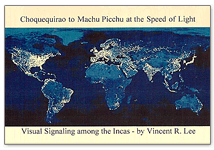
After many explorations in the Zona de Vilcabamba, this paper follows up on the single known reference in the Spanish Chronicles of the Inca Empire describing their system of visual signaling with smoke by day and fire by night.
Available as printed Soft Cover -
Seven Inca Pucaras on the Bolivian Frontier
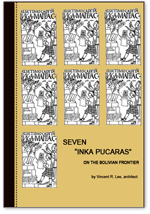
This paper documents the irresistible challenge of exploring present-day Bolivia’s imperial frontier, in search of the lost fortresses of the Inkas. A region in southeastern Bolivia known as the “Charkas” promised numerous sites in a vast area of mountains and jungles. This is the story of our two month journey into the Charkas, what we found and what it signified regarding the Inka presence in that part of the world.
Available as printed Soft Cover -
Cuzco-tuyo, The Search For a Lost Inca Fortress
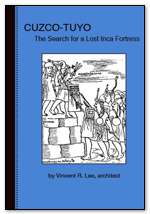
Prior to Pizarro’s landing in Peru, Portuguese adventurer Alejo Garcia led a large force into southeastern Bolivia. Among the various Inca sites they destroyed during their invasion was the fortress of Cuzco-tuyo, built by Topa Inca. The Inca Huayna Capac dispatched a large army south and successfully drove out Garcia and his band. Cuzco-tuyo was rebuilt, but later abandoned, and the whereabouts of the fortress were lost. The idea of finding traces of this Inca stronghold led us to explore the region and resulted in the probable identification of the ‘lost’ fortress of Cuzco-tuyo.
Available as printed Soft Cover -
Vira Vira: A Chachapoyas Site
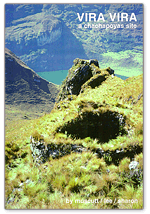
Three papers by explorer Keith Muscutt, architect Vincent Lee, and former museum director Dr. Doug Sharon describe the discovery, history and exploration of Vira Vira, a previously undocumented mountaintop site in a largely unexplored region of northeastern Peru. The architecture and planning of Vira Vira and the significance of the Chachapoyan culture in the larger Andean context are discussed from these three points of view.
Available as printed Soft Cover -
Cerro Ventarrón, a Rare Moche Fortress?
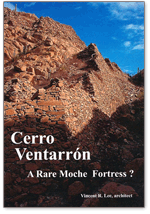
Extensive irrigation systems transformed the coastal deserts of Peru into rich agricultural valleys, with impressive cities. Largest of these cultures were the Moche and later the Chimu, whose mud-brick ruins still astound Peru’s north coast visitors. A mysterious Moche mountaintop fortress, unusually constructed of stone rather than mud, caught the attention of my friend and colleague, Ignacio (Nacho) Alva. Together we explored this incredible site; this paper describes our discoveries and details the Moche ruins at Cerro Ventarron.
Available as printed Soft Cover -
A New Box for Chaco
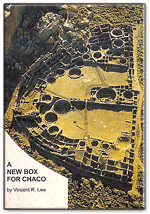
Despite separation by hundreds of years and thousands of miles, the Inka Empire of the Andes and the American southwest’s famous, but enigmatic, “Chaco Phenomenon” in the San Juan Basin of the Four Corners have similar architectural and cultural footprints. This book suggests the Inka example may provide useful clues as to the elusive workings of the Chacoan system.
Available as printed Soft Cover
Building BIG, With Next To Nothing
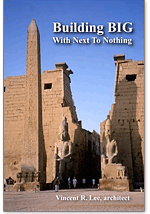
During a long career in architecture, Vince developed an appreciation for the ingenuity of modern builders in solving difficult construction problems. But how did the ancient builders solve similar complications without access to our modern day technology? Vince’s yearning to understand the building secrets of the ancient architects led him to field research he was able to perform during his second career in archaeology. This book is a collection of monographs, resulting from more than thirty years of fieldwork exploring the world’s most fascinating places and astonishing examples of megalithic construction.
-
The Lost Half of Inca Architecture
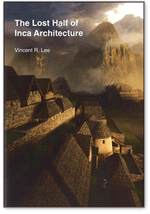
While Inca architecture is known for it’s marvelous stonework, much less is known about the magnificent roofs of native thatch that once crowned these carefully crafted structures. The 16th century Spaniards, though impressed by the scale of the thatch-work, recorded very few construction details. Examination of an extremely rare and virtually intact Inca structure high in Cordillera Vilcabamba, built to withstand violent Andean storms, provides clues to the entire scheme of Inca thatch construction which the author details in this paper.
Available as printed Soft Cover -
Design By Numbers: Architectural Order Among the Incas
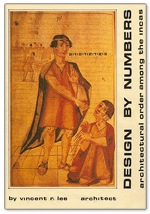
What tools and methods were available to the Incas to successfully design and construct their architectural works, without recourse to drawings or written numbers and instructions? Vincent Lee proposes an entirely new theory of the Inca design process, including an application of these ideas to the design of the Great Hall at Inkallaqta, one of the largest and most elaborate surviving Inca structures in the Andes.
Available as printed Soft Cover -
The Sisyphus Project:
Moving Big Rocks Up Steep Hills and Into Small Places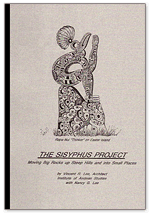
This paper describes the development and testing on Easter Island and final confirmation in Peru and Colorado of an entirely new method for moving large monoliths without the long gangs of pullers traditionally assumed necessary to the task.
Available as printed Soft Cover -
Reconstructing the Great Hall at Inkallacta
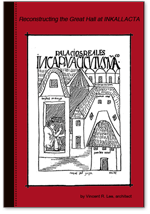
The Great Hall at Inkallacta, Bolivia, is the largest standing example of an Inca kallanka. The 26 x 78 meter covered area required an enormous thatched roof, but it has long been a mystery as to exactly how such a monumental structure was supported. We attempted to find answers to that and other questions by carefully studying the fallen west gable wall which had been previously obscured by brush but had retained much of its original shape after it had fallen to the ground.
Available as printed Soft Cover -
Ancient Moonshots: Megalithic Mysteries from before Technology
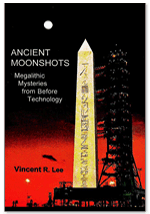
A new book proposing step-by-step solutions to the completion of four of the ancient world’s most mind-boggling feats of megalithic construction: Inca “Sacsawaman”; “El Gigante” on Easter Island; the “Unfinished Obelisk” at Aswan, Egypt, and the world’s largest dressed stone blocks at the Roman temple-site at Baalbek, Lebanon. These four sections are listed as individual publications below.
Available as printed Soft Cover -
Sacsawaman, An Inca Masterwork
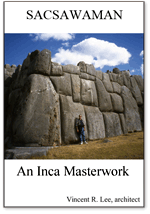
The question of how the megalithic monuments of the New World were built has bedeviled researchers and tourists alike for centuries. This paper represents the most plausible and detailed solution to the problem yet published. Supplement to the author’s original 1986 paper, entitled “The Building of Sacsayhuaman”.
Available as printed Soft Cover -
El Gigante, Awakening the Giant
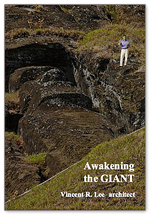
Researchers have long pondered the methods the inhabitants of Easter Island might have used to extract enormous stones from the quarry beneath the volcanic cone of Rano Raraku. Although still attached to bedrock in the quarry, “El Gigante,” (The Giant) is a fully-formed statue which would have been the largest ever erected, standing 20 meters (66 feet) tall, likely crowned by a 40-ton pukao, with a weight estimated to be at least 270 tons. How the Giant might have been extracted, moved and erected using rudimentary methods is the subject of this study.
Available as printed Soft Cover -
The Unfinished Obelisk
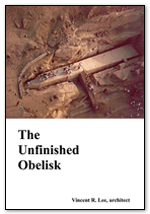
At the granite quarry at Aswan lies an Unfinished Obelisk. It developed a fatal crack before being extracted for transport to Thebes. If it had been completed the Unfinished Obelisk would have weighed nearly 1200 tons and stood 42 meters tall, and would have been one of the largest megaliths ever carved and moved by man. In this paper the author suggests how this monument could have been quarried, moved and erected using a more efficient method, contrary to those views held by many researchers.
Available as printed Soft Cover -
Baalbek’s Trilithon: An Enigma
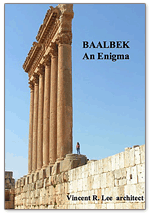
At Baalbek, three of the stones still in place beneath the Roman ruins weigh about 900 tons each. There are also 24 blocks weighing approximately 400 tons each. Still awaiting transport from the nearby quarry is the famed “Stone of the South.” Weighing in at about 1200 tons, it was long thought to be the largest cut stone in the world until a previously buried stone estimated to weigh 1500 tons was found nearby! How, and why, would such extraordinary structures be built? These works have been attributed to the Romans, but it may be possible to credit them instead to an unknown earlier culture with an even grander structure in mind. This paper examines who did this incredible work, when, and why.
Available as printed Soft Cover


